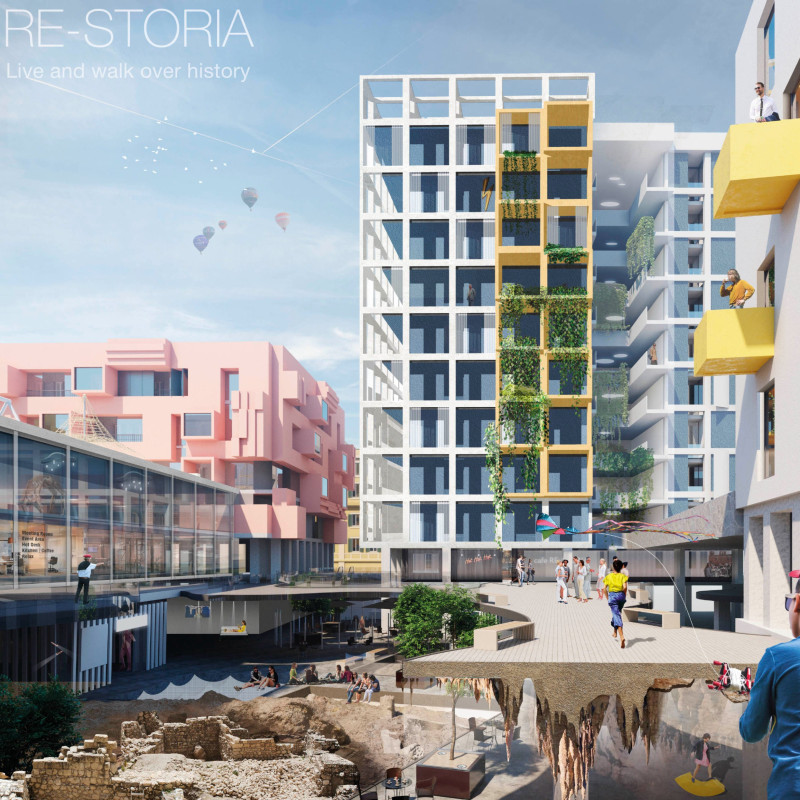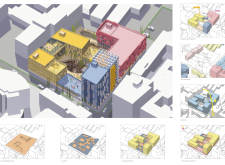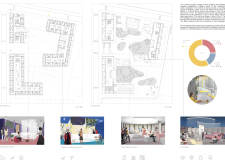5 key facts about this project
RE-STORIA represents a significant achievement in co-living design, located in the center of Rome. It aims to meet the housing needs of students and professors at Sapienza University, while connecting modern living spaces with the city's historical context. Positioned above an archaeological site, the design opens up a conversation between ancient and contemporary elements and contributes positively to the urban environment.
Design Concept
The concept centers on creating a layered living experience that respects historical assets. The layout consists of three buildings that serve different user groups. Student accommodations are designed as low-cost units, each around 15 m², and include shared facilities like co-working spaces, a gym, and communal living areas. This setup encourages social interaction and fosters a sense of community among residents.
Spatial Organization
The professors’ building stands out as a ten-storey tower featuring an open green atrium. These units are larger, about 25 m² each, which provides a more spacious living environment. This separation ensures that both students and professors have their specific needs addressed. The design carefully balances private spaces with communal facilities to create a supportive living arrangement that benefits both groups.
Community Integration
A vital aspect of the design includes various social spaces located on the lower levels of the complex. These areas house a lectorium, coworking offices, a museum, and even a swimming pool. This integration helps connect the university community with public spaces, promoting collaboration and engagement. It invites interaction not only among residents but also between the university and the city.
Sustainability Measures
Sustainability is a key principle in the design, employing advanced systems to reduce gas consumption for heating and electricity use for lighting. The project includes DualSun solar batteries that generate electricity and integrate heat exchangers to pre-heat tap water. Additionally, a human-centric lighting management system adapts lighting based on user needs, contributing to energy efficiency and overall comfort.
The exterior of RE-STORIA combines modern design features while reflecting the historical character of Rome, creating a cohesive look that respects the surroundings. The result is a thoughtful approach to urban living, grounded in sustainability and community engagement.






















































